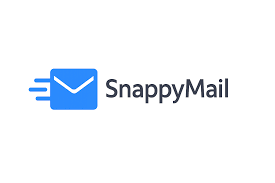SnappyMail — Fast and Lightweight Webmail Client
General Information
SnappyMail appeared as a fork of Rainloop when that project slowed down. Admins liked Rainloop’s simplicity but needed something leaner and better maintained, so SnappyMail filled that gap. It keeps the familiar interface but runs faster, consumes less memory, and gets updates on time.
It’s not trying to be a full groupware system. SnappyMail is just webmail — nothing more, nothing less. That’s why it’s often chosen by hosters or IT teams who want a browser front-end for IMAP/SMTP without dragging in heavy extras.
How It Works
SnappyMail runs on top of a regular web server with PHP. It doesn’t store mail itself — it connects to backend servers like Dovecot/Postfix or Exchange. Users log in through the web UI, and the app talks IMAP for reading and SMTP for sending.
Because it was built as a continuation of Rainloop, migration is straightforward. Many admins simply swap the package and keep existing configs. TLS is standard, and plugins can add extras like two-factor login or LDAP integration.
Functions
| Feature | In practice |
| Platforms | Linux/Windows server with Apache or Nginx + PHP |
| Protocols | IMAP for mail, SMTP for sending |
| Webmail | Responsive UI, multi-account, drag-and-drop, filters |
| Security | TLS/SSL, optional 2FA plugins, password encryption |
| Integration | LDAP/AD auth, OAuth logins, external contacts |
| Administration | Web admin panel, per-domain config |
| Extensibility | Plugins and skins, Rainloop-compatible |
| License | AGPL open source |
Installation Guide
1. Set up a LAMP or LEMP stack (Apache/Nginx, PHP, optional database).
2. Download SnappyMail from the official GitHub repo.
3. Unpack into the web root, fix permissions.
4. Open /admin, set an admin password.
5. Configure IMAP/SMTP and enable TLS.
6. Add domains and test login.
Admins often put it behind Nginx with Let’s Encrypt certs.
Everyday Use
– Hosting providers drop it in as the default webmail on customer panels.
– Small IT teams install it as a lightweight option when staff need browser access.
– Multi-account users like the ability to manage different inboxes under one login.
– Schools and NGOs use it as a simple, low-cost alternative to Roundcube.
For end users, it’s just mail in the browser — quick, clean, and not cluttered.
Limitations
– Webmail only: no calendars, no shared tasks, no chat.
– Plugin ecosystem is smaller than Roundcube’s.
– Needs regular updates since it’s a fast-moving fork.
– Mobile access is via browser only — no dedicated app.
Comparison
| Tool | Platforms | Strengths | Best Fit |
| SnappyMail | Web/PHP | Fast, lightweight, actively maintained | Hosters, SMBs, IT teams |
| Rainloop | Web/PHP | Predecessor, clean UI, less active now | Legacy installs |
| Roundcube | Web/PHP | Mature, many plugins | Schools, panels, SMBs |
| Horde Groupware | Web/PHP | Mail + calendars + tasks | Orgs needing full groupware |
| Afterlogic WebMail Lite | Web/PHP | Minimal and easy setup | Small providers |
Notes from the Field
Admins who switched from Rainloop usually say the migration took minutes, not hours. Users barely noticed the change — except that the interface feels snappier. The update cadence is also a plus, since security patches arrive on time. The advice most often shared: enable caching on the webserver and keep an eye on updates, since the project evolves quickly. For setups that just need a reliable, no-nonsense webmail client, SnappyMail tends to stick once deployed.

